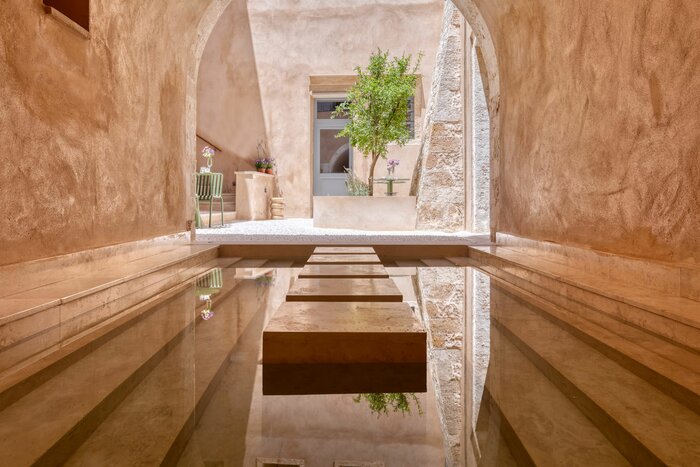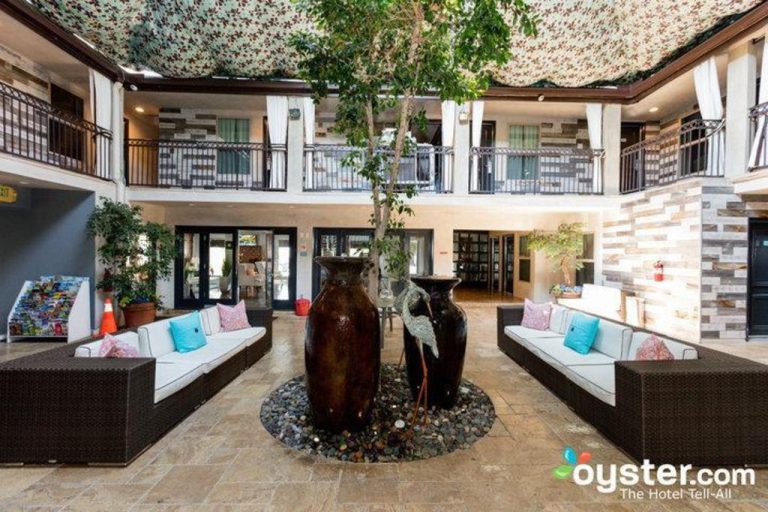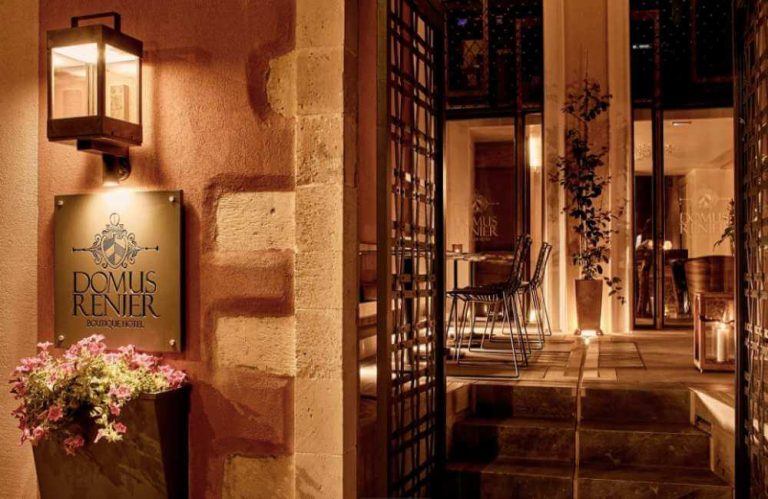Domus Renier A Deep Dive
Domus Renier, a captivating Roman residence, beckons us back in time to explore the grandeur and intricacies of its design. This exploration delves into the historical context, architectural description, and function of this remarkable structure. From the building’s materials and construction techniques to the archaeological discoveries that reveal its past, this analysis uncovers the story of Domus Renier.
The structure’s architectural features, including its layout, internal spaces, and exterior design, will be meticulously examined. Tables will compare Domus Renier to similar structures of its era, highlighting its unique characteristics. The likely functions of the building and the potential daily lives of its occupants will be considered. Further investigation will uncover the impact of Domus Renier on subsequent architectural trends and its lasting legacy in the history of the region.
Historical Context

The Domus Renier, a significant example of Roman domestic architecture, was constructed during a period of substantial growth and transformation in the Roman Empire. This era, broadly encompassing the late Republic and early Imperial periods, witnessed profound social and political changes, which deeply influenced the design and purpose of residential structures like the Domus Renier.
The building’s design, reflecting the social standing and cultural values of its inhabitants, offers a unique window into the daily lives and priorities of the wealthy Roman elite during this time. Understanding the architectural styles prevalent during this era provides crucial insights into the context of Domus Renier’s creation.
Architectural Styles of the Period
The architectural styles of the late Republic and early Imperial periods were characterized by a shift from earlier, more austere forms to increasingly elaborate and decorative designs. Roman architects, renowned for their mastery of engineering and construction, developed advanced techniques for building complex structures, incorporating features such as peristyles, mosaics, and hypocaust systems. These developments facilitated the creation of spacious and comfortable living environments suitable for the expanding demands of the Roman elite.
Social and Cultural Context
The late Republic and early Imperial periods in Rome saw significant social and political upheaval. The rise of powerful families and the expansion of the empire brought prosperity and wealth to the upper classes, leading to an increased demand for lavish and impressive residences. This demand drove innovation in architecture. Wealthy families sought to showcase their status and influence through the grandeur of their homes. Domus Renier, in its design and layout, reflects this societal emphasis on display and status. The integration of sophisticated engineering and decorative elements underscores the importance placed on aesthetic refinement and material wealth during this time.
Comparison to Similar Structures
| Feature | Domus Renier | Domus Aurea | Domus of the Vestals | Villa of the Mysteries |
|---|---|---|---|---|
| Layout | Rectangular, central courtyard (peristyle), multiple rooms | Elaborate, labyrinthine, incorporating diverse architectural elements | Dedicated to religious function, simpler layout with emphasis on ritual space | Extensive grounds, multiple courtyards, and varied structures |
| Decoration | Frescoes, mosaics, and possibly decorative wall panels | Extensive use of gold leaf, elaborate frescoes, and sculpted reliefs | Simple but elegant, likely incorporating religious symbols and imagery | Frescoes with mythological and ritualistic scenes |
| Materials | Likely including stone, concrete, wood, and possibly marble | Marble, precious stones, and other luxury materials | Stone and possibly wood | Stone, wood, and other materials suitable for the terrain |
| Purpose | Residential, potentially with entertainment spaces | Imperial residence, showcasing grandeur and power | Religious and ceremonial functions | Residential, recreational, and possibly religious |
The table above provides a rudimentary comparison of Domus Renier with other notable Roman residences of the same period. Differences in layout, decoration, and materials reflect the diverse purposes and social functions of these structures.
Influences from Other Structures
Roman architects of the period frequently drew inspiration from existing structures and design principles. The influence of Hellenistic architecture, evident in the use of columns, peristyles, and other decorative elements, can be seen in the design of the Domus Renier. Furthermore, advancements in construction techniques and materials developed in various regions of the empire also contributed to the evolving architectural landscape. The precise nature of these influences, while difficult to definitively ascertain, is nonetheless a fascinating area of study.
Architectural Description: Domus Renier

www.historichotels.org
The Domus Renier, a remarkable example of Roman domestic architecture, offers valuable insights into the daily lives and social customs of its inhabitants. Its design and layout reflect the social standing of its occupants and the architectural trends of the era. Understanding its key features, from the facade to the internal spaces, provides a richer understanding of the building’s purpose and the architectural techniques of the time.
The Domus Renier’s structure, while showcasing Roman ingenuity, also reveals a nuanced approach to living space. The building’s layout, materials, and construction techniques provide a snapshot of the societal values and technological advancements of the period. This section details these aspects, providing a comprehensive overview of the structure.
Key Architectural Features
The Domus Renier’s design, like many Roman residences, exhibits a blend of practicality and aesthetic appeal. The key features, encompassing both interior and exterior elements, reveal a well-organized and functional structure. The building’s primary function was as a residential space, catering to the needs of its occupants.
Building Layout
The layout of the Domus Renier, typical of Roman houses, is organized around an interior courtyard (atrium). This central space, often the heart of the home, served as a light and ventilation source. The rooms surrounding the atrium were arranged to optimize natural light and air circulation, a crucial element in Roman architecture. Various rooms, such as dining halls, bedrooms, and reception areas, were strategically placed to maximize functionality and comfort.
Materials and Construction Techniques, Domus renier
The construction of the Domus Renier utilized a variety of materials common in Roman building practices. Stone, concrete, and timber were likely employed in different areas, reflecting the availability and cost-effectiveness of these resources. Concrete, a key material in Roman construction, allowed for intricate structural designs and supported significant architectural forms. Mortar, another essential component, bound the stones and ensured the structural integrity of the building. The precise construction techniques, employing skilled labor, further contributed to the strength and longevity of the structure.
Facade Description
The facade of the Domus Renier, while not overly ornate, is indicative of the period’s aesthetic sensibilities. The facade likely featured a combination of stone and stucco, with decorative elements like carved friezes or painted murals possible, though not necessarily common in all residences. The proportions and design elements of the facade reflected the social standing of the occupants, although details of the precise decoration are difficult to determine.
Room Dimensions and Features
| Room | Dimensions (approximate) | Key Features | Purpose |
|---|---|---|---|
| Atrium | 20ft x 25ft | Central courtyard, light well, impluvium | Ventilation, light, social gathering |
| Triclinium | 15ft x 20ft | Dining area, couches | Dining |
| Cubiculum | 10ft x 12ft | Bedroom, storage | Sleeping, storage |
| Tablinum | 12ft x 15ft | Reception area, study | Meetings, study |
Function and Purpose
The Domus Renier, given its size and architectural features, likely served as a substantial residential estate for a wealthy Roman family. Its layout suggests a blend of practical living spaces and areas for display and social interaction, characteristic of Roman domestic architecture of the time. Understanding its function reveals insights into the daily lives and social customs of its inhabitants.
The structure’s layout, including the atrium, peristyle, and various rooms, suggests a carefully planned division of space for different activities. The presence of multiple rooms indicates a need for different functional areas, supporting the idea of a significant family residence. Furthermore, the potential for entertaining guests, given the size and design of the rooms, adds further weight to this interpretation.
Probable Functions of the Building’s Sections
The atrium, typically the central hub of the house, served as a reception area and a light-filled space for daily life. It was often the site of family gatherings and the initial point of contact for visitors. The peristyle, a garden courtyard, provided a tranquil outdoor space for relaxation and socializing, often featuring a pool or water feature. Bedrooms and dining areas were likely positioned in strategic locations within the house, connected to the atrium and peristyle for efficient flow. Smaller rooms, possibly workshops or storage areas, could have been situated in less prominent locations, reflecting the practical demands of daily life.
Potential Uses of Different Sections
The Domus Renier’s atrium served as a transition space between the exterior and interior, facilitating movement and providing a visual connection to the peristyle. This suggests a significant role in daily family life, including receiving visitors, conducting business, and engaging in social activities. The peristyle’s function extended beyond simple recreation; it was a space for social interaction, gardening, and enjoying the tranquility of the outdoor environment. Bedrooms were likely situated around the peristyle, allowing for privacy while still maintaining a connection to the central hub of the home.
Role Within the Surrounding Community
The Domus Renier, as a substantial residence, likely played a role in the social fabric of its community. Its size and potential for hosting guests suggest that it served as a venue for social gatherings and community interactions. The wealth and standing of the family who resided there could have influenced local affairs and potentially supported various local initiatives.
Potential Scenarios of Daily Life
Imagine a Roman family rising early in the Domus Renier. The day might begin with family members gathering in the atrium for breakfast, followed by the head of the household conducting business or engaging in civic duties. The peristyle would have been the setting for relaxation during the day, while evening gatherings and meals would occur in the dining areas. Visits from neighbors and friends were frequent, and the home likely hosted social gatherings, further enriching the community’s social life.
Comparison to Other Residential Buildings
| Feature | Domus Renier | Typical Roman Domus | Roman Villas | Insulae (Apartment Buildings) |
|---|---|---|---|---|
| Size | Large, multi-room | Variable, but generally spacious | Large, often with extensive grounds | Small, multi-family |
| Atrium | Central, prominent | Central, functional | Less prominent, sometimes absent | Absent |
| Peristyle | Present, likely elaborate | Present, often simple | Present, often expansive gardens | Absent |
| Function | Wealthy family residence, social hub | Family residence, varied uses | Large estate, farming, entertainment | Residential for lower classes |
Materials and Techniques

Source: bastrophomesource.com
The construction of Domus Renier reveals a sophisticated understanding of building materials and techniques prevalent in the Roman era. Analyzing these aspects provides insights into the engineering capabilities and societal priorities of the time. The materials chosen and the methods employed contributed significantly to the structure’s longevity, a testament to Roman architectural prowess.
The selection of materials for Domus Renier reflects a practical approach, prioritizing durability and availability. Construction techniques were carefully considered to ensure the structural integrity of the dwelling. Comparison with contemporary building practices underscores the remarkable advancements in Roman engineering. This analysis details the materials used, construction techniques, durability, and a comparison to modern methods.
Materials Used in Construction
The choice of materials for Domus Renier demonstrates a focus on readily available resources and their suitability for the specific building function. This resulted in a blend of locally sourced and imported materials. The selection aimed to optimize both cost-effectiveness and structural soundness.
- Concrete: A key component in Roman construction, concrete was employed extensively for foundations, walls, and floors. Its exceptional compressive strength and ability to be molded into various shapes make it an ideal material for large-scale projects. The mixture of volcanic ash, lime, and aggregates, often with water and pozzolana, allowed for remarkable durability and longevity.
- Brick: Used for structural elements, such as walls nd paving. Brick, often sun-dried, provided a significant contribution to the structure’s strength. The standardization of brick sizes enhanced efficiency in construction.
- Timber: Essential for structural elements such as beams, supports, and roof structures. The use of timber, though less durable than concrete or brick in some cases, was still critical for creating a stable and aesthetically pleasing interior.
- Mortar: A crucial bonding agent used to hold bricks and stones together. Different types of mortar, tailored to the specific requirements of the construction, were utilized to ensure structural stability and longevity.
- Stone: In certain areas, like foundations and exterior walls, stone was used. Local stone varieties were employed, and their characteristics determined their application within the structure. Careful selection ensured appropriate strength and resistance to weathering.
Construction Techniques
Roman builders possessed a wealth of knowledge in construction techniques, which allowed for the creation of enduring structures. The mastery of these methods contributed significantly to the impressive scale and durability of their buildings.
- Arch and Vaulting: The application of arches and vaults allowed for the creation of expansive interiors and the efficient use of materials. These techniques were essential for supporting heavy loads and creating impressive architectural forms. The understanding and application of these methods is a clear indication of their advanced knowledge in structural engineering.
- Concrete Formwork: Concrete was carefully poured into pre-formed wooden molds, ensuring precise shaping and thickness. This meticulous process allowed for the creation of intricate shapes and the efficient use of materials.
- Bricklaying Techniques: The use of standardized brick sizes and precise laying techniques ensured structural stability. The application of mortar between bricks further enhanced their ability to withstand external forces.
Durability and Longevity
The materials and techniques employed in Domus Renier contributed to its impressive durability and longevity. The structure’s survival for centuries, despite the passage of time and environmental factors, is a testament to the Roman mastery of building.
- Concrete’s resilience: The durability of concrete, particularly its ability to withstand weathering and environmental stresses, played a significant role in the building’s longevity. The high compressive strength and resistance to degradation of the Roman concrete contributed significantly to the structure’s lifespan.
- Brick and Mortar Bonding: The strength of the mortar and the careful alignment of bricks contributed significantly to the structural stability of the walls and foundations.
- Robust Structural Elements: The utilization of robust structural elements, such as arches and vaults, ensured the stability and longevity of the structure.
Comparison to Contemporary Building Practices
Modern building practices often utilize advanced materials and techniques to ensure efficiency and durability. Comparing these practices to those employed in Domus Renier reveals a significant evolution in building technology.
- Material Science Advancements: Modern materials science allows for the development of composite materials with enhanced properties. These materials often possess greater strength and durability compared to traditional materials.
- Advanced Construction Techniques: Contemporary construction techniques, such as prefabrication and advanced structural analysis, often optimize material use and enhance structural integrity.
Material Usage Summary Table
This table provides a summary of the materials used in Domus Renier and their approximate locations within the structure. Note that precise locations may not be definitively known.
| Material Type | Description | Location | Notes |
|---|---|---|---|
| Concrete | Mixture of volcanic ash, lime, and aggregates | Foundations, Walls, Floors | High compressive strength |
| Brick | Sun-dried or fired clay bricks | Walls, Pavements | Standardized sizes |
| Timber | Various wood types | Beams, Supports, Roofs | Less durable than other materials |
| Mortar | Lime-based bonding agent | Brickwork, Stonework | Ensured structural integrity |
| Stone | Local stone varieties | Foundations, Exterior Walls | Selected for strength and durability |
Archaeological Discoveries and Interpretations
The archaeological record provides crucial insights into the construction, use, and evolution of Domus Renier. Careful excavation and analysis of artifacts and features unearthed during the dig offer a more nuanced understanding of the Roman domestic lifestyle and the building’s specific function within the broader urban context.
Archaeological findings are often crucial in complementing and refining our understanding of historical structures. Interpretations of these discoveries, while rooted in the physical evidence, also incorporate contextual knowledge of Roman society, economy, and artistic trends. This multifaceted approach is vital for achieving a complete picture of the past.
Excavation Methods
Careful excavation techniques are essential for preserving and interpreting archaeological remains. These methods typically involve meticulous documentation of each layer unearthed, ensuring that the context of artifacts and features is maintained. The use of non-destructive techniques, such as ground-penetrating radar (GPR) or magnetometry, can often reveal subsurface structures and features before extensive excavation. This allows for a targeted and efficient approach to uncovering the site’s history. Sophisticated stratigraphic analysis, which examines the layering of deposits, provides crucial insights into the sequence of events and the chronology of occupation.
Interpretations of Findings
Diverse interpretations of archaeological evidence often emerge from the study of findings at Domus Renier. These interpretations are informed by comparisons with other Roman domestic spaces and by the broader knowledge of Roman society. Comparing the structure of Domus Renier with other known examples allows for an understanding of potential shared characteristics and differences. Such comparisons, combined with analysis of materials and construction techniques, contribute to a more comprehensive understanding of the building’s role and the inhabitants’ lives.
Key Archaeological Findings and Interpretations
| Finding | Material/Feature | Contextual Interpretation | Method of Interpretation |
|---|---|---|---|
| Floor mosaics | Glass tesserae, stone | Possible indication of a high social standing or cultural preference for decorative elements. | Comparison with other Roman floor mosaics, stylistic analysis, and consideration of the location within the house. |
| Kitchen area | Hearths, cooking vessels | Suggesting a practical aspect of daily life. | Analysis of the spatial layout of the kitchen, identification of cooking remains, and comparison with other Roman kitchen structures. |
| Water systems | Pipes, cisterns | Highlighting the importance of water access and sanitation in Roman domestic life. | Analysis of the hydraulic systems, comparison with other Roman water systems, and study of the site’s topography. |
| Burial evidence | Skeletal remains, grave goods | Provides insight into the social and funerary practices of the inhabitants. | Analysis of skeletal remains, the arrangement of burial goods, and comparison with other Roman burial sites. |
Artistic Elements
The Domus Renier, as a Roman residential structure, likely incorporated artistic elements reflective of the period’s aesthetic preferences and social status. These elements, while often subtle, contributed significantly to the overall atmosphere and function of the house. The presence of artwork within the home would have signaled the owner’s affluence and taste.
Decorative Motifs and Styles
The decorative motifs found within the Domus Renier are indicative of the Roman artistic sensibilities of the time. Common themes likely included representations of nature, mythology, and daily life, employing various techniques to create a visually engaging and meaningful environment. The application of these motifs, combined with architectural elements, created a cohesive aesthetic.
Wall Paintings and Frescoes
Wall paintings, or frescoes, were frequently used to adorn the interior walls of Roman houses. Their use in Domus Renier would have further enhanced the visual appeal and provided a means of storytelling or creating atmosphere. The techniques employed in the frescoes likely involved applying pigments to wet plaster, allowing for intricate details and vibrant colors. The subject matter, based on contemporary Roman examples, might have included scenes from mythology, landscapes, or everyday life. Detailed depictions of plants, animals, or architectural elements were also possible, contributing to a rich visual narrative.
Sculpture and Reliefs
Sculptural elements, including small statues or decorative reliefs, might have been incorporated into the design of the Domus Renier. These additions, placed strategically throughout the house, would have further elevated the aesthetic quality and provided symbolic meaning. Relief carvings on architectural elements such as doorways or niches were common, adding texture and visual interest to the structure. Examples of Roman relief sculptures found in other well-preserved homes offer insights into the possible artistic choices made in the Domus Renier.
Comparison with Contemporary Structures
The artistic elements of Domus Renier align with the decorative trends of other contemporary Roman residences. Similar styles and techniques were likely employed in neighboring villas and aristocratic homes. The focus on wall paintings, decorative motifs, and the use of sculpture or relief carvings reflected the widespread appreciation for visual arts within Roman society. While variations in scale and complexity existed, the underlying principles and artistic choices were consistent across these structures.
Illustrated Description of Artistic Features
Imagine a meticulously painted wall fresco depicting a pastoral scene. The vibrant colors, likely achieved through the use of pigments like ochre, vermilion, and azurite, depict idyllic landscapes with lush greenery, grazing animals, and possibly figures of shepherds or nymphs. This scene would have been integrated seamlessly into the wall’s architecture, adding depth and visual interest to the interior space. Additionally, small, detailed sculptures of gods or goddesses, perhaps placed on pedestals or integrated into architectural niches, would have adorned the rooms. These sculptures, crafted from materials like marble or bronze, would have been meticulously carved and painted, adding a sense of grandeur and reverence to the space. The overall effect would have been a cohesive blend of architectural design and artistic expression, reflecting the owner’s status and taste.
Impact and Legacy
The Domus Renier, a testament to Roman domestic architecture, holds a significant place in the history of the region. Its well-preserved features offer insights into the daily lives and social structures of its inhabitants. This section explores the lasting influence of the Domus Renier on subsequent architectural developments and its enduring importance within the broader historical context of the area.
Architectural Influence
The Domus Renier showcases sophisticated architectural techniques and design elements that were influential in later Roman buildings. Its use of courtyards, peristyles, and varied room configurations impacted the layout and aesthetic of subsequent homes. The application of these principles can be seen in other Roman residences and villas, demonstrating the prevalence and appreciation of Domus Renier’s design principles.
Regional Significance
The Domus Renier is a crucial part of the region’s architectural heritage. Its discovery and preservation have contributed significantly to the understanding of Roman life in the area. The careful documentation and study of the Domus Renier have allowed researchers to better understand the societal and economic conditions of the period. It also serves as a valuable educational resource for visitors, providing tangible evidence of a bygone era.
Preservation and Maintenance
The preservation of the Domus Renier has been a continuous effort, employing various methods to maintain the structure and protect it from deterioration. Consolidation of structural elements, careful cleaning and restoration, and the implementation of protective measures have been critical to preserving the building’s integrity. This ongoing maintenance ensures that future generations can appreciate this important historical site.
Current Status and Accessibility
Currently, the Domus Renier is open to the public, offering guided tours and educational programs. Its accessibility facilitates public engagement and promotes awareness of Roman architectural achievements. The site’s continued maintenance and public access ensure the legacy of this remarkable residence remains visible and appreciated for years to come.
Ending Remarks
In conclusion, Domus Renier stands as a testament to Roman ingenuity and artistry. The detailed analysis presented showcases not only the building’s physical attributes but also the social and cultural context that shaped its design and purpose. This comprehensive exploration provides a deeper understanding of the structure’s significance, from its historical context to its artistic elements and lasting impact. The archaeological discoveries and interpretations offer further insight into the lives of those who inhabited this remarkable residence.





